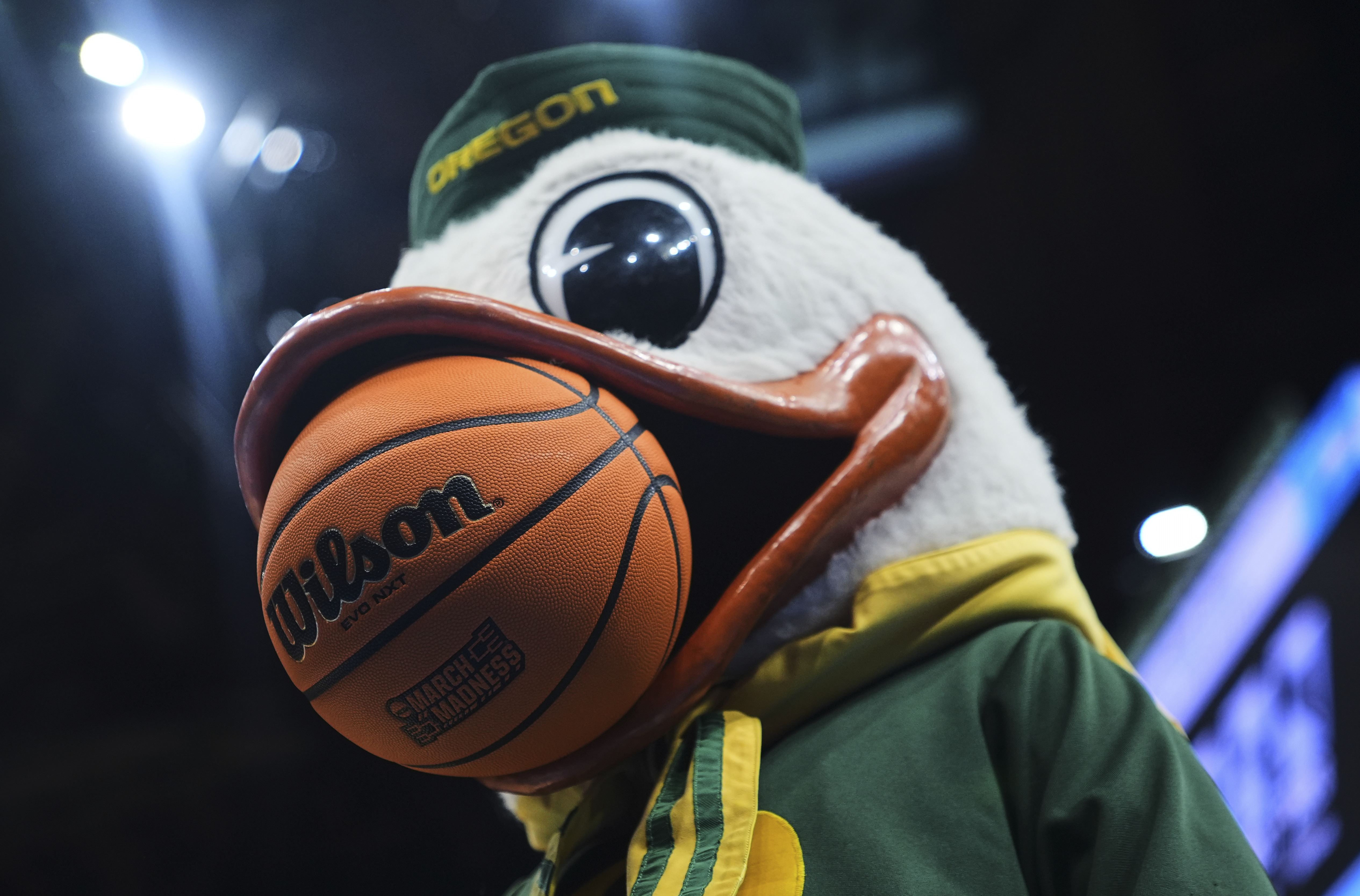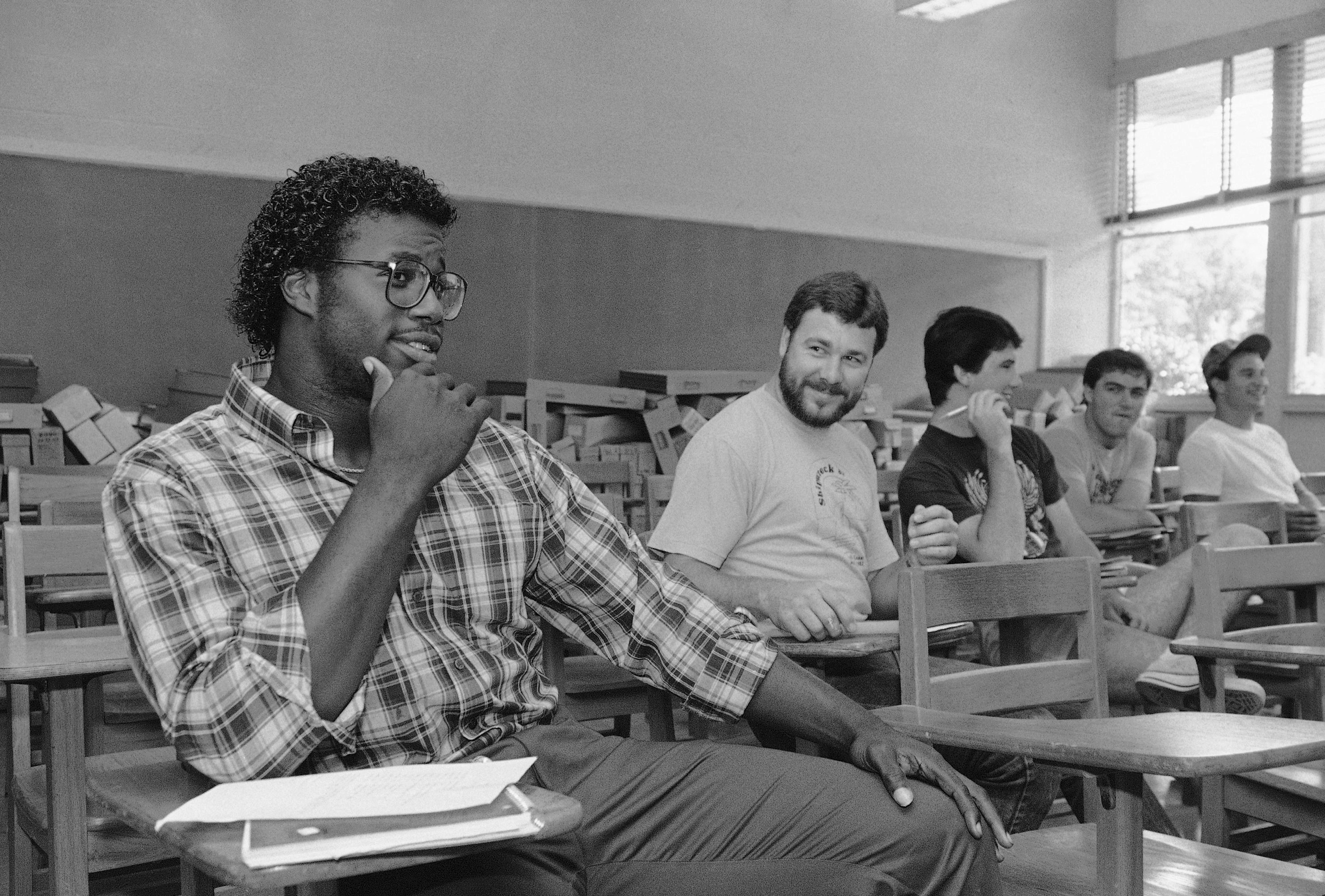
Ripple effects of NIL hard to gauge
Half a century before cinematic nightmares began on Elm Street, an adjacent address made it to the big screen in what few realized was a watershed moment for college sports.
Huxley College, it seemed, was desperate for athletic talent, and an innovative student proposed a deft solution to his well-positioned father.
“Dad, two of the greatest football players in the country hang out in a speakeasy downtown,” to which his father, Professor Wagstaff replied, “Are you suggesting that I, the president of Huxley College, go into a speakeasy without even giving me the address?”
“It’s at 42 Elm Street,” said the son, “but you can’t go there; it’s unethical. It isn’t right for a college to buy players.”
“It isn’t, eh?” snapped the professor. “Well, I’ll nip that in the bud.”
The year was 1932, and though Huxley was a purely fictional outpost of higher learning, its presentation by the incomparable Marx Brothers in “Horse Feathers” both foresaw and foreshadowed the wayward path of intercollegiate athletics for most of the next century.
Addressing the faculty then, the critical dialogue went thusly:
Wagstaff: “Where would this college be without football? Have we got a stadium?”
The faculty: “Yes.”
Wagstaff: “Have we got a college?”
Faculty: “Yes.”
Wagstaff: “Well we can’t afford both. Tomorrow we start tearing down the college.”
The treacherous university road from those Depression era movie houses to the red letter courthouse day of April 7, 2025, stretched through nine-plus decades of conflicting purposes, under-the-table payments, academic scandal, tragicomic recruiting excess and, finally, over-the-table payments. But when U.S. District Judge Claudia Wilken convenes a hearing on a proposed settlement in the case known as House vs. NCAA on Monday, intercollegiate athletics in America will finally gain some unity of purpose as well as a coherent structure in which to build its future.
Or, just as likely, it won’t.
If you’re betting — who’d be surprised if there was a line on it? — I’d lean toward won’t.
Yeah, it’s complicated, but essentially what we have here, Huxley students, is the perfect court case for our time, a convulsive era when we’re almost gleefully tearing down colleges and universities by stripping away their federal funding, just as we arrive at a formula for making sure that the athletes who represent those institutions (who effectively ARE those institutions to the sports consumer) are rightfully and in many cases extravagantly compensated for their role in the sports business model.
Scientists, researchers, historians and scholars of multiple disciplines are fleeing to more hospital academic climates, while athletes are jamming the transfer portal like it’s the Liberty Tunnel, trying to see how many colleges they get to pay them before their usefulness/eligibility expires.
The clarifying settlement Judge Wilken might approve this week allows colleges to pay athletes directly for use of their name, image, and likeness (NIL) as part of a $2.8 billion antitrust settlement, instead of having that money generated by so-called collectives or loose third-party consortiums of each university’s athletic interests. Up until now, NIL compensation couldn’t be negotiated by the athlete until after enrollment, the rule that triggered the court case when Tennessee Attorney General Jonathan Skrmetti argued that it robbed athletes of leverage when their bargaining power was at its peak.
“This settlement benefits generations of student-athletes, protects Tennessee universities from NCAA retaliation, and pushes college sports toward a new equilibrium that acknowledges financial reality while preserving competitive integrity,” Mr. Skrmetti said in a statement last month. “I’m glad to see the NCAA give on defending a world that no longer exists.”
Also in the settlement is a provision for back pay for athletes who started competing in any year after 2015, as well as medical benefits, mental health and nutrition resources, life skills development, and the possibility of post-career medical coverage. Universities that opt in to the settlement will operate with a kind of salary cap for athletes of some $20 million to $22 million, so obviously, the new system is not for everyone.
Saint Francis of Loretto promptly dropped to Division III, where there are no scholarships, and hundreds of smaller schools will follow in a trend that was entirely foreseeable. College sports have long since mounted parallel tracks to that societal railroad where the rich get richer, the poor poorer, and now, of course, we’ll all get dumber.
The good news, such as it is, is that college sports probably won’t return to the toxic terrain of its worst moments, many of which seemed to calcify in the 1980s and spill into the new century.
We can certainly do without stories where the stud tackle out of Canon-McMillan seems headed to Pitt in 1983, then changes his mind after influencers from SMU smack $5,000 on a table in a Canonsburg area hotel room. The NCAA later found that Sean Stopperich took that money, an additional $6,000, as well as a job for his dad in Dallas to play for the Mustangs and tear up his knee. In part for those violations, SMU got the NCAA “death penalty,” meaning the program was shut down in 1987. Stopperich transferred to Temple and died of a drug overdose in 1995.
Compelling as they were, we can probably do without the lessons of Marcus Dupree, the singularly talented running back from Mississippi and the subject of ESPN’s chilling 30-for-30 “The Best That Never Was.” Mr. Dupree’s recruitment by Oklahoma, Texas, and a hundred other schools in the same era included, according to Mr. Dupree, offers of $250,000 and an oil well.
The NCAA eventually got around to vacating national championships in both football and basketball over blatant Reggie Bush-USC-type violations in the early 2000s, a tipping point for the idea that generations of duplicity could end if colleges just paid the people who are making all the money for them.
Even now, at the ostensible dawn of a new era, colleges still want to employ athletes without making them, you know, employees.
As Professor Wagstaff would surely tell you, that will continue to be quite the conundrum.

